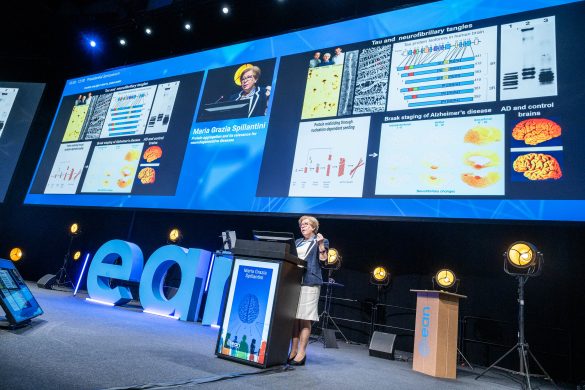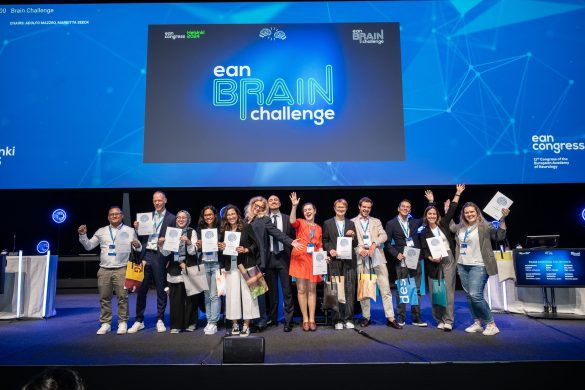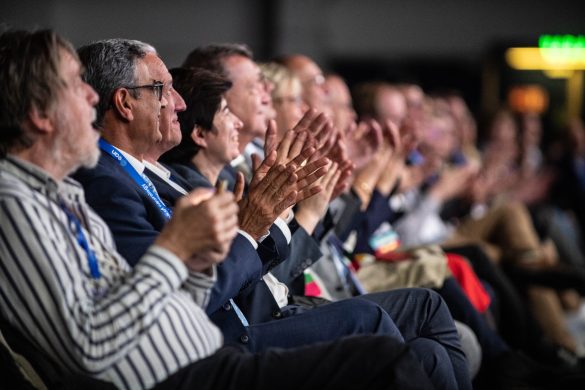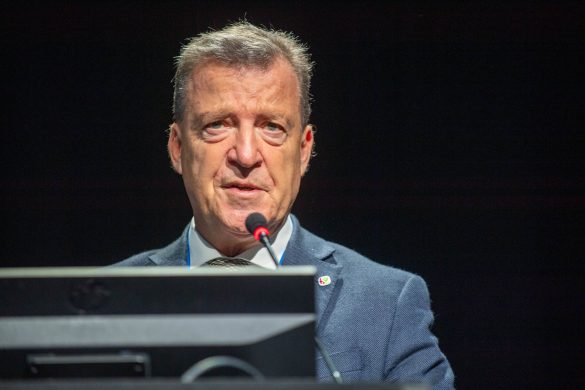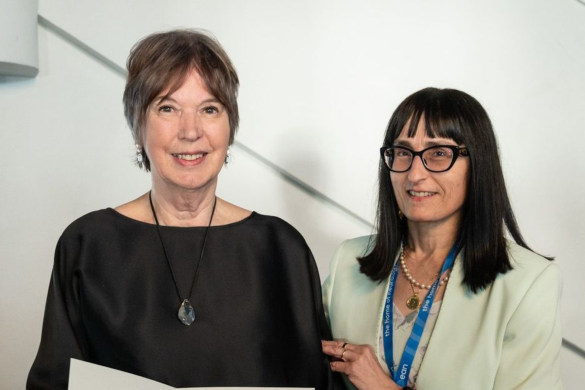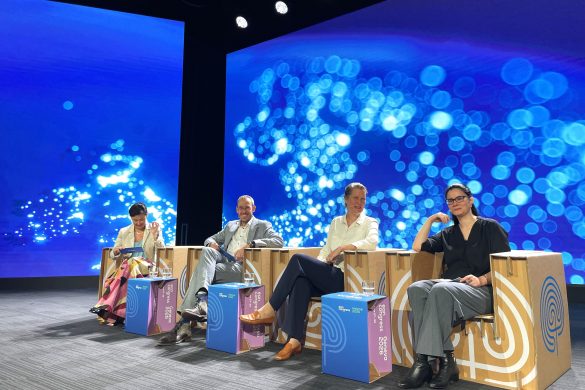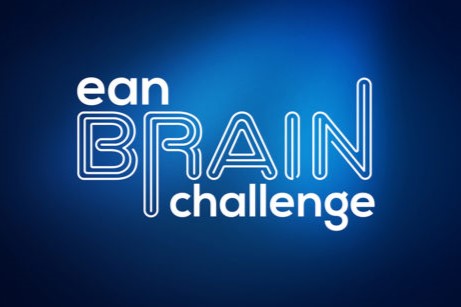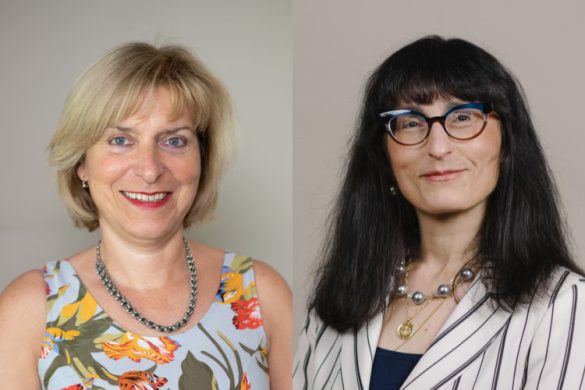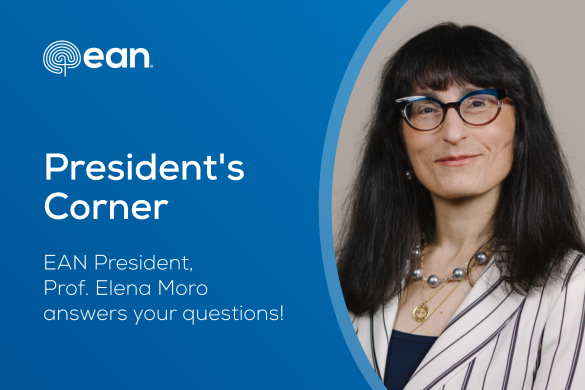Ireland: island of saints and scholars. Although in the interests of full disclosure not all of its 5 million inhabitants are necessarily either saintly or scholarly, the visitor to its shores will certainly find many footprints of Ireland’s tradition of folklore and stories. The island’s temperate climate is nourished by the Gulf Stream, turning the landscape into a lush green onto which are embedded imprints of Ireland’s cultural past, typified by the extraordinary Neolithic tomb at Newgrange.
At this site, which dates from 3000BC and hence older than the Pyramids of Egypt, uniquely on the shortest day of the year, a shaft of dawn sunlight penetrates the chamber to its innermost wall. Many of Ireland’s geological splendors are woven into legends; the spectacular rock formation of the Giant’s Causeway evokes stories of one of our greatest legendary heroes, Fionn MacCumhail, who sought to build a causeway to fight a rival giant in Scotland by flinging rocks into the sea. Both Newgrange and the Giant’s Causeway are World Heritage Sites.
Ireland’s beautiful landscape as well as its turbulent history is reflected in its literature, and we boast a proud tradition of prose, poetry and music. While Nobel laureates in literature include WB Yeats, George Bernard Shaw, Samuel Beckett and Seamus Heaney, one cannot escape the litany of other literary giants such as Jonathan Swift, Oscar Wilde, James Joyce, Sean O’Casey, JM Synge and others. The first language of Ireland is Gaelic, which although still spoken by the minority, is enjoying a robust revival. There is renewed interest in our Celtic origins and traditions, which have contributed to a rich tapestry of traditional music and song.
Ireland has a strong tradition also in the biological sciences and Medicine.
The Royal College of Physicians (RCPI.ie) was founded in 1654 and enjoyed something of a “Golden Age” of noteworthy physicians in the mid 1800’s with the likes of Robert Graves, William Stokes and Dominic Corrigan. Eminent Irish neurologists have included Robert Bentley Todd and Gordon Holmes. The historical focal point of neurological and neurosurgical services was based at the Richmond Hospital, and it was here that pioneering epilepsy surgery protocols were developed, due in large part to the influence of the late Dr Hugh Staunton.
There are seven medical schools in Ireland, six in the Republic of Ireland and one in Belfast, Northern Ireland. The oldest medical school is Trinity College Dublin, founded in 1711, closely followed by the Royal College of Surgeons in Ireland founded in 1784. The youngest school is the University of Limerick (2007), which offers only a graduate-entry programme.
There are currently approximately 35 neurologists in the Republic of Ireland, serving a population of nearly 5 million; this equates to approximately 1 neurologist per 120,000 population, one of lowest ratios in Europe.
Training in Neurology in the Republic of Ireland is coordinated by the National Specialist Training Scheme under the auspices of the RCPI. Entry to the scheme requires completion of at least 2 years’ basic specialty training in General Internal Medicine, culminating in passing an examination towards membership of the RCPI, or equivalent examination. The Neurology Specialist Training programme is a five-year scheme, of which one year is dedicated to research, and candidates are encouraged to enroll into an MD or PhD research programme. Neurology training in Northern Ireland is coordinated by the Northern Ireland Medical and Dentistry Training Agency.
Academic neuroscience in Ireland is coordinated by the Irish Institute of Clinical Neurosciences (IICN.ie.). The IICN supports both educational and research initiatives by organizing neuroscience meetings through which researchers and trainees can present their research. The Irish Neurological Association rotates its annual meeting throughout the whole island of Ireland, and held its 50th meeting in 2014 at the Titanic Centre Belfast.
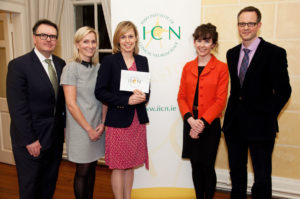
Dr Chris McGuigan (left), Dean of the Irish Institute of Clinical Neurosciences (IICN) at the Annual Registrar’s prize Day
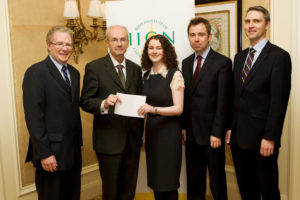
Dr Tim Counihan (2nd left), EAN national delegate, presenting an award at the Registrar’s prize
Dublin has hosted a number of international neurology congresses including ECTRIMS 2001 and the Association of British Neurologists (ABN) 2009, both chaired by Professor Michael Hutchinson (St. Vincent’s University Hospital, Dublin). The International Movement Disorders Society (MDS) held its annual meeting also in Dublin in 2012, chaired by Professor Timothy Lynch (Dublin Neurological Institute). The British and Irish chapters of the ILAE are due to meet in Dublin in October 2016, under the chairmanship of Professor Norman Delanty (Beaumont Hospital, Dublin).
The 27th International Symposium on ALS/MND will be held in Dublin between 7-9 December 2016. The Clinical Research Meeting will be chaired by Professor Orla Hardiman Trinity College Dublin,while the Biomedical research Meeting will be chaired by Jochen Prehn, Royal College of Surgeons in Ireland.
Despite recent economic challenges, which have impacted both healthcare provision and academic endeavors in neuroscience research in Ireland, the country boasts a thriving neuroscience community with an emerging international reputation in both teaching and research. Anyone contemplating training in clinical neurology or in the neuroscience in Ireland will find an energetic, modern academic milieu surrounded by the intoxicating landscape and culture of a unique island.
by Dr. Timothy Counihan, Istitutional Delegate of the Irish Institute of Clinical Neuroscience to the EAN.




